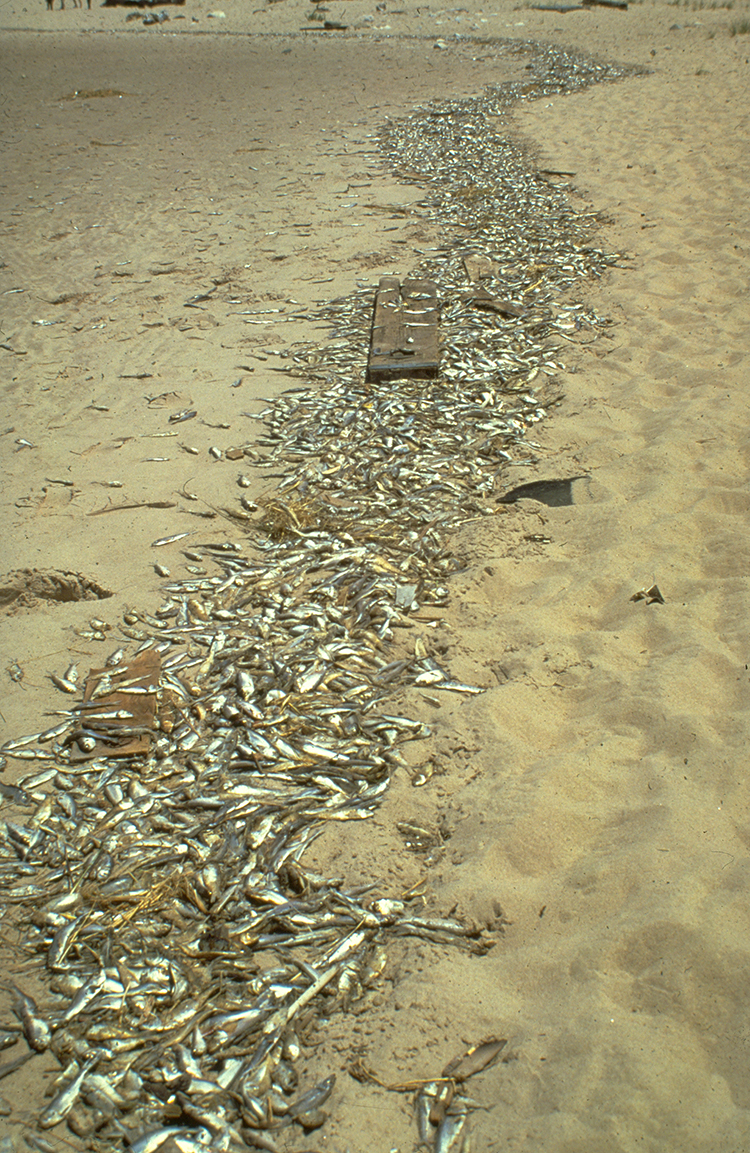Invasive Species

More than 180 aquatic species have been introduced into the Great Lakes. Fortunately, most of them either did not establish populations or are barely noticeable in the ecosystem. A small fraction of these non-native species have become invasive, which means that they have established abundant populations that have negative consequences for the existing ecosystem. Invasive species frequently have strong negative impacts on fish populations and the fisheries they support. Sea lamprey, alewife, dreissenid mussels, round gobies, and the spiny water flea are all examples of invasive species that have affected or are affecting Great Lakes fisheries. Along with overfishing and pollution, invasive species are responsible for the loss of 18 fish species in at least one Great Lake. Because of the damage that these harmful invaders pose to fisheries, the Great Lakes Fishery Commission believes that preventing the introduction and establishment of non-native aquatic species is essential for the long-term sustainability of the fishery. This means closing vectors of introduction that include illegal transport of invasive species, discharge of ballast water through shipping, inadvertent introduction by boats, and release of live bait, as well as eventually separating the Mississippi River and _SMALL.jpg) Great Lakes basins through their artificial connection at Chicago. Ships, through the discharge of ballast, is also a critical invasive species vector. Ships use ballast to stabilize a trans-oceanic or interlake voyage. When the ballast is discharged to take on cargo (the cargo then serves as ballast), organisms picked up with the ballast water in the originating port can be introduced to the ecosystem to which the ballast is discharged. The commission believes ballast regulations and practices should be harmonized between Canada and the United States, should apply nationally, and should apply to foreign as well as domestic ships. Four species of Invasive carps, bighead carp, silver carp, black carp, and grass carp are some undesirable invasive fishes that Great Lakes fishery managers are seeking to prevent from establishment. The commission will continue to be vigilant at the policy level and facilitate cooperative action from fishery managers to prevent establishment of harmful invaders into the future. Meanwhile, the commission will continue to effectively control the invasive sea lamprey.
Great Lakes basins through their artificial connection at Chicago. Ships, through the discharge of ballast, is also a critical invasive species vector. Ships use ballast to stabilize a trans-oceanic or interlake voyage. When the ballast is discharged to take on cargo (the cargo then serves as ballast), organisms picked up with the ballast water in the originating port can be introduced to the ecosystem to which the ballast is discharged. The commission believes ballast regulations and practices should be harmonized between Canada and the United States, should apply nationally, and should apply to foreign as well as domestic ships. Four species of Invasive carps, bighead carp, silver carp, black carp, and grass carp are some undesirable invasive fishes that Great Lakes fishery managers are seeking to prevent from establishment. The commission will continue to be vigilant at the policy level and facilitate cooperative action from fishery managers to prevent establishment of harmful invaders into the future. Meanwhile, the commission will continue to effectively control the invasive sea lamprey.

